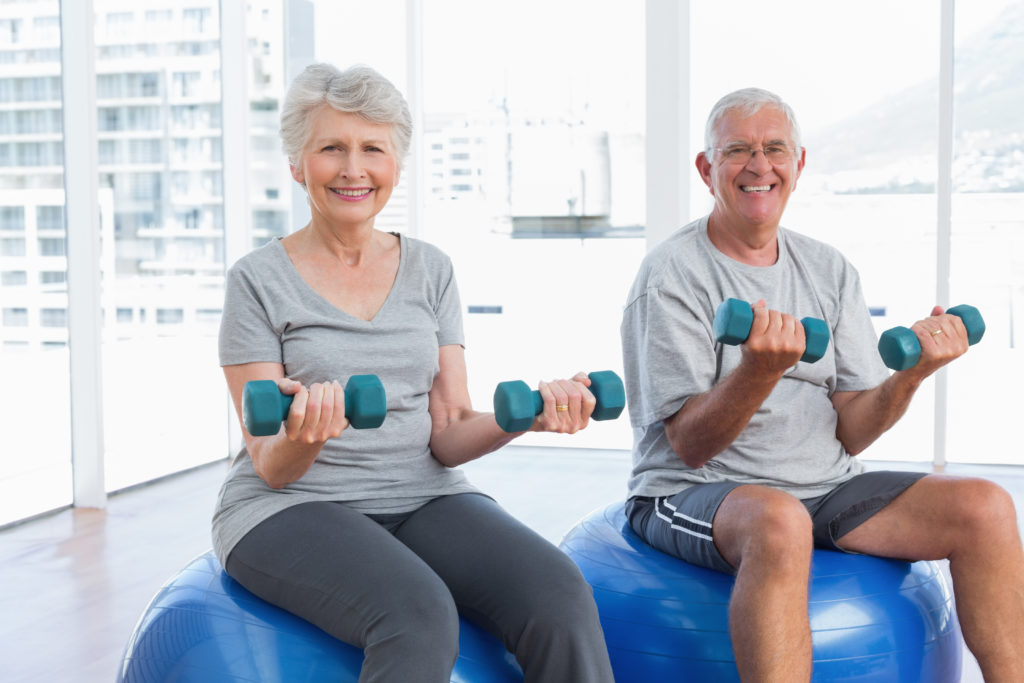
Physical Considerations for Training Older Seniors
The market for older seniors (70 and over) is growing thanks to the aging of the Baby Boomers. By 2050, 1 in 5 Americans (21%) will be 85 or older— up from roughly 14% in 2010 (Vincent & Velkoff 2010).
“The Baby Boomers will start turning 70 in 2016,” notes Colin Milner, founder and CEO of the International Council on Active Aging and a member of the World Economic Forum’s Global Agenda Council on Ageing. “This group and their parents have 47 times the wealth of the young and will account for 70% of the disposable income in the U.S. by 2017.” Bottom line: “Older” seniors have the desire and the funds to pay for wellness services. They are, in short, the perfect clients, Milner says.
However, it’s important to recognize that not all adults over age 70 are alike, cautions Milner, who is based in Vancouver, British Columbia. In their abilities, they may range from elite masters athletes to those who don’t exercise, but can live independently with ease, to those who need assistance performing the most basic activities of daily living (such as toileting, dressing or eating).
To begin training 70-and-over seniors safely, you must first be aware of their specific physical concerns.
Physical Considerations
Functional impairment. Roughly one-fifth of men over the age of 70 and almost one-third of women of the same age are unable to perform at least one common functional task such as walking, climbing stairs or stooping. Happily, the flip side of this statistic means that 70%–80% of 70-plus seniors do not have major functional impairments (Sipe & Ritchie).
However, when training an older senior, be prepared to encounter one or more of the following issues, and be aware of the implications:
Chronic disease. Common age-related chronic diseases seen among adults 70 and older include arthritis, hypertension, heart disease, cancer, diabetes and stroke. Of these, osteoarthritis is the most common, affecting roughly half of men and over 60% of women. In second place is hypertension (high blood pressure), which affects approximately 4 in every 10 men and half of all women in this age bracket (Sipe & Ritchie).
Note that deconditioned seniors are also especially at risk for shoulder, spine, neck and knee problems, adds veteran trainer Irv Rubenstein, PhD, exercise physiologist and founder of STEPS, a personal training center in Nashville, Tennessee.
Frailty. This term is a clinical description of the aging body’s decreasing ability to return to homeostasis when influenced by an external stressor. Over age 75, rates of frailty more than double: 7% of seniors aged 65–74 are frail, compared with 18% of those aged 75–84, and 37% of seniors over the age of 85 (UoM 2012). But even frail seniors in their 90s have been known to benefit from a multicomponent exercise program that includes muscle power training as well as balance and gait retraining (Cadore et al. 2014).
Muscle loss. Between the ages of 50 and 70, muscular strength declines, on average, by 30%, with even sharper losses after age 80. This age-related muscle loss (sarcopenia) varies dramatically among individuals and can have a large impact on functional capacity (Sipe & Ritchie). The possible causes of sarcopenia are multifactorial and include poor nutrition, inactivity, hormonal imbalances and neurological decline (Roubenoff 2000).
Hormonal shifts. Hormonal changes associated with age include menopause for women or age-related testosterone deficiency in men. If a client has such concerns, Rubenstein recommends weight-bearing, large-muscle-group exercises and power training (i.e., moving low resistances quickly).
Why? “Besides being more functional, these kinds of exercises are the best way to boost testosterone in both genders and to counteract the effects of postmenopausal body changes [in women].” He notes that power exercises should be done with low loads at high speeds, unless the client is sufficiently strong and the joints are sound enough to train with heavier loads.
Medication. It’s essential to be aware of the side effects of your clients’ medications. For example, some may impact blood pressure or cause dizziness, says Dan Ritchie, PhD, award-winning
trainer, president of the Functional Aging Institute and co-owner of Miracles Fitness in West Lafayette, Indiana—a gym exclusively dedicated to serving seniors. “Certainly be aware when individuals are on three or more medications.”
This is especially important for medications related to diabetes and heart drugs, notes Rubenstein.
Cognitive impairments. Be sensitive to issues such as Alzheimer’s disease and other causes of dementia. These are unique challenges, but they can be addressed until the client gets easily agitated or aggressive, says Ritchie. “The
key is to be consistent with movements and routine. Keep your session order similar and only add one new exercise from session to session.”
For more serious cases, Rubenstein recommends selectorized (fixed) weight machines when free weights become hazardous to use owing to the cognitive complexity of multitasking balance and movement at the same time.
For more information about training 70-and-over seniors, plus a much wider discussion of the topic, please see “Beyond Boomers” in the online IDEA Library or in the February 2015 print issue of IDEA Fitness Journal. If you cannot access the full article and would like to, please contact the IDEA Inspired Service Team at (800) 999-4332, ext. 7.